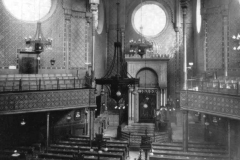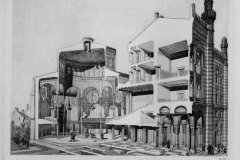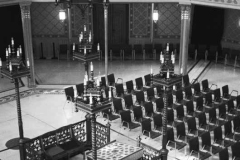The House of Assembly
The Spatial Implications of the Contemporary Sacral and Secular Uses of the Synagogue in Rumbach Sebestyén Street
Text: Zoltán Major
The post-war history of synagogues in historical Hungary is fairly diverse. In the Holocaust, the vast majority of the communities that belonged to the buildings were killed, and the majority of the society did not consider the abandoned buildings as their heritage. Most of them were demolished, converted beyond recognition, or simply left to their fate and perished. Some of them have been preserved and, although they have retained their religious functions as buildings, they have been given a new, often profane, function. There are, however, in-between cases where, in addition to religious worship and other congregational uses, the synagogue also hosts cultural and community events that are unrelated to the Jewish religion or culture. The main reason for this is that while reorganising communities, due to their size and lack of resources, synagogues designed for larger numbers of people simply cannot be maintained for exclusively religious and sacred purposes. The synagogue located in Rumbach Sebestyén Street, which was reopened in 2020, is a characteristic example of this phenomenon. The primary objective of my study is to present the architectural and spatial consequences of this mixed use.



